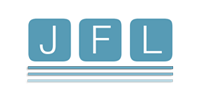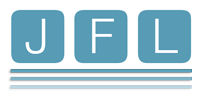The Syrian Democratic Forces, supported by the Global Coalition to Defeat Daesh/ISIS, took control of parts of Deir ez-Zor province in 2017 following battles with the Islamic State Organization. This extended over time phases of which the latest ended with the Battle of Baghouz in 2019 when SDF declared their areas of control in the western and eastern countryside of the province as a region under the Autonomous Administration of the northeast Syria. It did not take long after that control until the region started to be one of the most problematic and complex regions within the Autonomous Administration on the security level. Several factors contributed to this. One of the most prominent is the ongoing activity of the Organization cells in some areas in contrast to the form and level of the imposed management of the province. The interaction of these factors has led to the production of complex problems at various levels: service, economic, political, social, and military.
These problems have manifested themselves in various security forms within the local environment starting from the peaceful protests witnessed in several sectors over the past years passing through conflicts between the military components of SDF in the region, Deir ez-Zor Military Council, and reaching the recent clashes between SDF and the armed tribal movement.
The interference of these problematic issues and their results contributed to the consolidation of security fragility and a state of instability in the region. Despite the end of the armed conflict with the tribal forces in favour of SDF, which regained its control, its results continued to interact in various forms, pushing the Autonomous Administration on October 22, 2023, to launch a conference under the title of “Enhancing Security and Stability” as an initiative pledging to reform various sectors, governance aspects, and security in the region addressing direct issues affecting the population. The outcomes of the conference and its commitments being under study along with the committee formation being without tangible implementation on the ground are among the concerns of the local population about the lack of full commitment to their execution.
In this context, the judiciary in Deir ez-Zor emerges as one of the most problematic sectors in the region, and this is because of its security, economic, social, and governance reflections within the local environment. This is particularly significant as the experience of the judiciary in the region has passed under various stages according to the successive military forces to finally stabilize according to the form of the judicial system followed by the Autonomous Administration of northeast Syria and represented by the System of Social Justice and the affiliated institutions and bodies.
This experience began in Deir ez-Zor in late 2018 and early 2019, and went under several developments that were not free of obstacles and criticisms directed at the structure, mechanisms of operation, and level of independency and efficiency, especially in the middle of the reliance of a part of the population on alternative judicial systems, represented by customary/tribal justice and the courts of the Syrian government distributed in areas under its control within Deir ez-Zor province or in neighbouring provinces such as Al-Hasakah.
Therefore, this paper seeks to assess the reality of the judiciary system affiliated with the Autonomous Administration of NE Syria in Deir ez-Zor, diagnoses its most prominent challenges that hinder the application of its functions and prevents the expected level of efficiency within the local environment and its specificity. This is from the perspective of local experts working in judicial institutions: judges, lawyers, reconciliation committee members, and representatives of civil society organizations operating in the region as well as representatives from the local community like elders, and tribal leaders.
This is with the aim of coming up with realistic and feasible recommendations regarding the priorities of judicial reform needed in the region, in a manner that enhances its role as one of the pillars of good governance and sustainable stability at various levels. The main research question is summarized in: what is the reality of the judiciary system affiliated with the Autonomous Administration within its controlled areas in Deir ez-Zor, and what are its most prominent challenges on the levels of structure and framework, human resources, efficiency, and independency?
To answer its main question and achieve its objectives, the paper relied on two types of data sources, distributed as follows:
- Primary sources: the paper relied on focus group discussions as primary sources of data. Justice for Life organization held three sessions during January 2024 distributed across the western and northern countryside of Deir ez-Zor: Al-Basira, Al-Kasrah, and Mhemida. Each session included a sample of 8 participants distributed across defined relevant groups. The top groups included judges, lawyers, representatives of reconciliation committees working in the Office of Social Justice and its affiliated bodies in Deir ez-Zor, legislative council members, representatives from civil society organizations in the region as well as representatives from the local community including elders and tribal leaders. The sample ensured gender representation and the participation of women to the best extent possible. The sessions were based on a pre-prepared survey which included questions covering various aspects of evaluating the judiciary sector targeting different groups. This survey was built based on secondary data sources, in addition to a group of exploratory interviews conducted by the researcher with lawyers and judges in Deir ez-Zor and some other regions affiliated with the Autonomous Administration.
- Secondary sources: These included a review of various previous studies, despite their scarcity, in addition to relevant human rights reports issued by international and local organizations. Also, this included published journalistic reports related to the dimensions of the topic. This is in consideration of review of most of the legal and functional references regulating the work of the judiciary authority, officially approved by the Autonomous Administration, and involved perusing some decisions and documents issued by the courts with various levels.
The significance of this paper comes from its subject matter, which is represented by the judiciary as it is considered a crucial indicator for assessing various aspects of governance including administrative efficiency, the level of security and stability, and the nature of civil/military relations. This places the judiciary at the top priorities of any serious project for governance reformation, especially in Deir ez-Zor, which faces complicated governance issues directly contributing to the fragility of the security environment. These issues have indirectly led to recent conflicts witnessed in the region.
Perhaps what further enhances its importance are the goals it seeks to achieve and the context in which it is presented. The paper is a part of the project of Justice for Life, which aims to provide a series of papers related to studying the challenges of primary and vital sectors in the areas of Deir ez-Zor controlled by the Autonomous Administration. At the top of these sectors is the judiciary. It also aims to offer realistic and feasible recommendations that reflect the aspirations of the local community and enhance the role of the judiciary and other institutions in maintaining security, supporting stability, and involving public in decision-making and institution management within their areas. This is achieved through supporting a culture of dialogue between the local community and the Autonomous Administration supporting reform demands on a level and expanding the role of civil society as a genuine mediator in this dialogue on another level.
Read more: Judicial System













